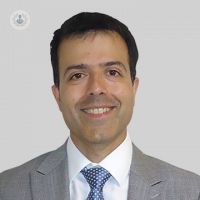FAQs about ear pinning surgery
Written by:Is it a major operation? Is there an ideal age for surgery? How can I refer my child for ear pinning surgery? And how much does it cost? We put your most common questions about ear pinning surgery to Mr Paul Chatrath, a distinguished London ear, nose and throat surgeon, specialising in rhinology and facial plastic surgery.

Is ear pinning surgery a major operation?
Surgery to improve the shape and positioning of the ears is routine elective surgery, usually performed under a general anaesthetic – although sometimes a local anaesthetic can be used.
It can take anything from 15 minutes (if the Earfold technique is used), up to around 45 minutes per ear for a traditional pinnaplasty or otoplasty procedure. In both cases, you should be able to go home on the same day.
What are the latest techniques being used?
There are some less invasive alternative techniques to traditional pinnaplasty surgery, and in particular some recent advances in the last few years.
Suture refinement
Minimally-invasive suture refinement techniques involve placing a stitch from the outside through the skin and cartilage to reshape the ear without the need for an external cut or incision. This can be performed under a local anaesthetic, but it is generally only suitable for younger children with very soft ear cartilage.
The Earfold implant
The Earfold Implant has offered a novel and minimally invasive alternative to traditional pinnaplasty/otoplasty surgery. It involves the use of a lightweight yet strong implant made of titanium, nickel and 24 carat gold which is inserted beneath the skin at the front of the ear. This causes the ear to curl backwards and regain its upper fold that is most likely to have been deficient. It is a more straightforward procedure than a traditional surgery, being undertaken under a local anaesthetic, and taking only 15 minutes per ear.
There are many advantages to the earfold implant. For example, you don’t need to wear a head bandage all of the time in the days after treatment, and you can also get back to work or school sooner than after traditional surgery. One other advantage is that you can have an idea as to how your ears might look by trying the Prefold tester implant in clinic.
One disadvantage is that the edges of the implant can sometimes show through. It is also not possible to tailor the end result to exactly what you would like as closely as you can with traditional pinnaplasty surgery. These options will be discussed with you in clinic when you consult with your specialist.
Is there an ideal age for ear pinning/ear correction surgery?
One of the most common ages to undergo this type of surgery is shortly after your child has started attending school, usually around the age of 6-10. There are also some teenagers and younger adults who attend who feel self-conscious about how their ears look, and particularly if you are reluctant to wear your hair up.
It is also increasingly common to see adults presenting for surgery, in whom traditional pinnaplasty was never offered or never appealed to them, and in whom the Earfold implant has offered a less invasive, simpler alternative.
How can I get my child referred for ear pinning?
It is becoming increasingly difficult to get ear pinning surgery on the NHS. This is in line with other forms of cosmetic surgery which are no longer routinely funded, unless there are particular extenuating circumstances such as psychological distress which has been assessed and confirmed by a paediatric psychologist or psychiatrist. In such situations, funding by the local commissioning GPs might be approved.
Otherwise, the only option is to consider having the surgery privately. Ear reshaping surgery is undertaken by both plastic surgeons and ENT (ear, nose and throat) surgeons with an interest in facial plastic surgery. It is important to try to find a surgeon who can undertake both traditional pinnaplasty and more minimally invasive ear reshaping techniques such as suture-based refinement and Earfold implant, as this will allow the most appropriate treatment to be recommended for you.
What does it cost roughly in the UK?
The cost to undergo ear reshaping surgery depends on a number of factors, including location within the UK, whether one or both ears are being operated, and whether the technique used is Earfold or a traditional pinnaplasty. Costs can vary widely, ranging from £1800 to £4000 on average.
If you would like to discuss your surgical options for ear pinning with Mr Chatrath, click here to see available appointments and book online .


